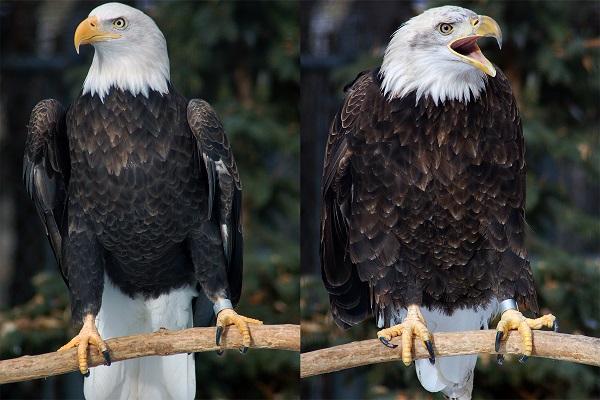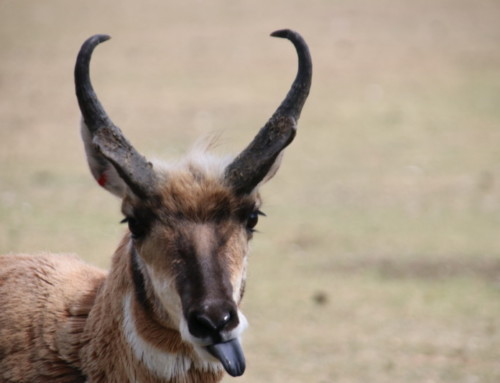Bald Eagle (Haliaeetus leucocephalus):
The Bald Eagle is the only eagle found exclusively in North America. Its scientific name is Haliaeetus leucocephalus: the first name means ‘sea eagle” and the second refers to its white head (leuco = white, cephalus = head). It is also one of the largest birds of prey (raptors) in the Western Hemisphere averaging 4 kg in weight with a wingspread of more than 2 meters and a body length, when perched, of 76 cm. Bald eagles are also known for making the largest nests of any bird in North America.
Bald Eagles were more common before Europeans came to North America and in the succeeding centuries their numbers have dropped several times, often very drastically. The numbers of bald eagles in North America have mostly stabilized lately but it is a fact that only 50% of birds hatched have a chance of reaching adulthood and living to produce more eagles. It takes 4 to 6 years for a bird to reach maturity and for the white head and tail feathers to appear through successive molts. They can live for up to 50 years in captivity but various hazards in the wild from accidents, electrocution or run-ins with power lines, accidental trapping and poisoning from environmental pollution (mercury, DDT, other organochlorines) tend to shorten the wild lifespan. At one time, sport hunting and killing of eagles was promoted since they, wrongfully, were thought to deplete fish stocks and to prey on domestic livestock.
Bald Eagles need to have some access to water whether lakes, rivers or the ocean for their main food source of fish and the occasional waterfowl. They will also prey on whatever might be convenient including stealing from one another or other raptors such as the Osprey. They will also scavenge carcasses and prey on small mammals and other birds. Often the younger birds will have to make do with scavenging until their fishing or stealing skills are sharpened. Although most eagles migrate to warmer parts of North America in the winter, they will remain in colder areas as long as there is open water for fishing or there is some other regular source of food such as discarded fish at camps or commercial winter fisheries. Cold weather is not a deterrent for most animals to live in the same place summer and winter; it is the lack of food available. Many herbivores will either migrate or hibernate or at least sleep through most of the winter. Carnivores, whether birds or mammals, will stay in an area as long as they can find enough food to sustain them.
Although it is not known for certain that a pair of eagles will bond for life, they certainly will stay together as a pair for many years, returning to the same nest site and adding more twigs and branches every year, sometimes to the detriment of the host tree. One of the largest nests measured was 3 meters across and 6 meters deep. Where tall, old growth trees are not available, eagles will nest on cliffs or other pinnacles and in the Arctic will even nest on the ground. Courting is a busy and joyous affair with lots of aerial acrobatics and chases. After mating, the female will lay 2 to 3 eggs in a moss and feather-lined depression in the nest. During the 35 days of incubation the female generally spends most of the time on the nest with occasional breaks when the male takes over. He spends his time defending their 1 to 2 square km territory from other eagles. A pair may not necessarily have young every year. Loss of old growth forests and the necessary habitat to support eagles is now one of the greatest threats to their numbers.
Our Zoo has two Bald Eagles, Dawson and a younger one, Juneau. Do come out to see them and perhaps you also may hear the distinctive eagle call which has been characterized as similar to a gull’s scream broken into several notes – not the high pitched “squeeee” that is often used in films – that sound belongs to the red-tailed hawk.
For more extensive information: https://animaldiversity.org/accounts/Haliaeetus_leucocephalus/


